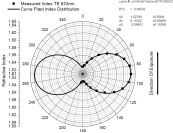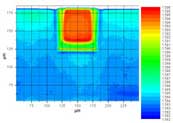Refractive index
Mode spectroscopy and RNF for highly precise characterization of refractive index of materials and components

Mode spectroscopy
Mode spectroscopy is a highly precise possibility to determine the thickness of a dielectrical layer as well as its refractive index. The procedure is based on the total reflection at boundary layers with different refractive indices.
 Fraunhofer Institute for Reliability and Microintegration IZM
Fraunhofer Institute for Reliability and Microintegration IZM
